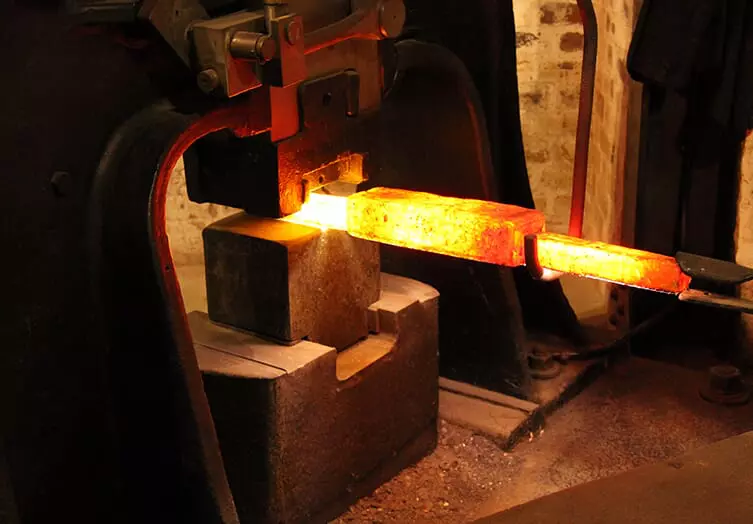Hot Forging Services
Hot Forging Services
 What Is Hot Forging?
What Is Hot Forging?
Hot forging is a metal forming process that involves shaping a metal while it is heated to a high temperature, typically above the recrystallization temperature of the material. This temperature (up to 1150 °C for steel, 360 to 520 °C for al-alloys, 700 to 800 °C for cu-alloys) is necessary in order to avoid strain hardening of the metal during deformation. The process begins with heating the metal to make it more malleable and reduce its resistance to deformation. Once the metal reaches the desired temperature, it is placed on a die or mold, and a compressive force is applied to shape it into the desired form.During hot forging, the metal undergoes plastic deformation as it is subjected to high pressure. This deformation occurs while the metal is in a softened and ductile state due to the elevated temperature. The application of compressive forces helps to rearrange the internal structure of the metal, aligning the grain structure and reducing any defects or voids present.
What Are the Advantages of Hot Forging?
The elevated temperature during hot forging allows for a greater degree of material deformation and the ability to create complex 3D geometries. Hot forged components exhibit enhanced ductility, making them suitable for a wide range of configurations. Compared to cold forging, hot forging offers greater flexibility as it enables the production of customized parts.The excellent surface quality achieved through hot forging allows for various finishing options like polishing, coating, or painting, tailored to meet specific customer requirements. Hot forging materials are readily available globally, which positively influences their final price.
What Are the Disadvantages of Hot Forging?
One drawback of hot forging, in comparison to cold forging, is the potential for warping in certain metals if not closely monitored during the heating, forging, and cooling stages. This can result in less precise tolerances compared to metals forged through cold forming.Hot forging is typically more costly than cold forging due to the need for heat treatment to initiate the forging process and the subsequent cooling process required to prevent warping. Automating the heat treatment process is recommended, especially in industrial-scale operations, which may entail additional upfront costs for tool acquisition.
Five Common Applications of Hot Forging
● Automotive industry
Hot forging is extensively used in the manufacturing of automotive components such as engine parts, suspension components, gears, and drive shafts. Forged components offer high strength and durability, making them suitable for high-stress applications.● Aerospace industry
Hot forging is utilized in the production of aerospace components such as turbine disks, fan blades, and landing gear parts. Forged components offer high strength and fatigue resistance required for safety-critical applications.● Construction industry
Hot forging is commonly used in the construction industry for the production of structural components such as bolts, nuts, and shafts. Forged components offer high strength and toughness, making them suitable for demanding applications.● Mining industry
Hot forging is used in the manufacturing of mining components such as drill bits, hammers, and picks. Forged components offer high toughness and wear resistance required for harsh mining environments.● Oil and gas industry
Hot forging is used in the production of oil and gas components such as valves, couplings, and flanges. Forged components offer high strength and resistance to corrosion and erosion, making them suitable for harsh oil and gas environments.Ultimately, the selection of the process hinges on the specific product requirements and the type of metal to be employed. All forging methods have the potential to serve as effective means for reinforcing and shaping your metal workpieces into the desired end product.
